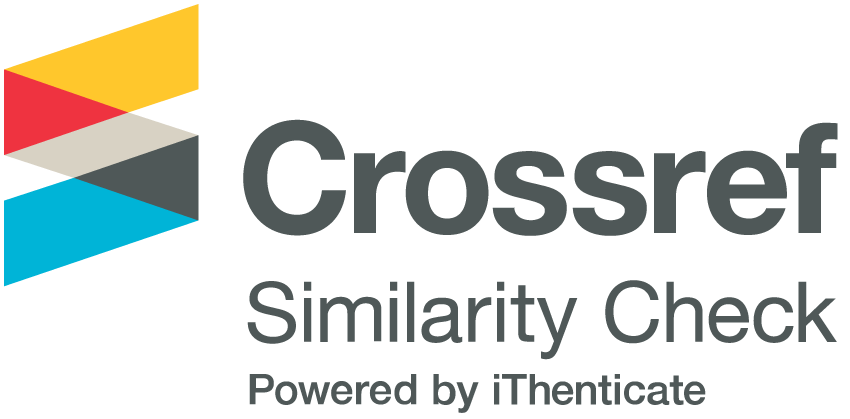School Bullying and Social Skills: An Empirical Research Study in Axarquía, Malaga in 2021
DOI:
https://doi.org/10.54790/rccs.9Keywords:
bullying, interpersonal skills, onlooker, victim, bullyAbstract
This study aims to analyse the relationship between school bullying and social skills by means of a survey of 506 pupils at several secondary schools located in the region of Axarquía (Malaga, Spain). First, we examined the role of onlookers in a bullying scene. Likewise, we studied the potential victims, bullies, types and frequencies of this phenomenon. Second, we investigated how the likelihood of being an onlooker, victim or bully varies across the level of fourteen social skills. The conclusion was that the higher the level of social skills, the lower the likelihood of being a victim or a bully. Furthermore, onlookers were found to have a higher level of social skills than the victims and bullies, although bullies scored higher on a very significant social skill: manipulation.
Downloads
Metrics
References
Arsenio, W. F. y Lemerise, E. A. (2001). Varieties of Childhood Bullying: Values, Emotion Processes, and Social Competence. Social Development, 10(1), 59-73. https://doi.org/10.1111/1467-9507.00148
Avilés, J. M. (2004). ¿Cómo abordar un caso de bullying? En R. Belandia (Ed.), IV Curso de verano. Prevención de riesgos laborales en la enseñanza (pp. 143-173). Instituto Vasco de Ergonomía y Stee-eilas.
Ballesteros, B., Pérez, S., Díaz, D. y Toledano, E. (2018). III estudio sobre acoso escolar y cyberbullying según los afectados. Fundación Mutua Madrileña y Fundación ANAR.
Brighi, A., Ortega, R., Pyzalski, J., Scheithauer, H., Smith, P. K., Tsormpatzoudis, C., et al. (2012). European Bullying Intervention Project Questionnaire (EBIPQ). University of Bologna. https://doi.org/10.1037/t66195-000
Bronfenbrenner, U. (1987). La ecología del desarrollo humano. Paidós ibérica.
Caballo, V. E., Salazar, I. C. y Equipo de Investigación CISO-A España (2017). Desarrollo y validación de un nuevo instrumento para la evaluación de las habilidades sociales: El «Cuestionario de Habilidades Sociales» (CHASO). Psicología Conductual, 25(1), 5-24. https://doi.org/10.1037/t65669-000
Cano-Echeverri, M. M. y Vargas-González, J. E. (2018). Actores del acoso escolar. Revista Médica Risaralda, 24(1), 60-66. https://doi.org/10.22517/25395203.14221
Cañas-Pardo, E. (2017). Acoso escolar: características, factores de riesgo y consecuencias. Revista Doctorado UMH, 3(1), 1-11. https://doi.org/10.21134/doctumh.v3i1.1371
Caravita, S. C. S., Di Blasio, P. y Salmivalli, C. (2010). Early Adolescents’ Participation in Bullying: Is ToM Involved? Journal of Early Adolescence, 30(1), 138-170. https://doi.org/10.1177/0272431609342983
Chávez, M. y Aragón, L. E. (2017). Habilidades sociales y conductas de bullying. Revista Digital Internacional de Psicología y Ciencia Social, 3(1), 21-37. https://doi.org/10.22402/j.rdipycs.unam.3.1.2017.41.21-37
Crick, N. R. y Dodge, K. A. (1994). A review and reformulation of social information-processing mechanisms in children’s social adjustment. Psychological Bulletin, 115(1), 74-101. https://doi.org/10.1037/0033-2909.115.1.74
De la Plaza, M. y González, H. (2019). El acoso escolar: factores de riesgo, protección y consecuencias en víctimas y acosadores. Revista de victimología, 9, 99-131.
Díaz-Aguado, M. J. (2007). Convivencia escolar y prevención de drogodependencias. Proyecto Hombre: revista de la Asociación Proyecto Hombre, 62, 34-40.
Díaz-Aguado, M. J., Martínez, R. y Martín, J. (2013). El acoso entre adolescentes en España. Prevalencia, papeles adoptados por todo el grupo y características a las que atribuyen la victimización. Revista de Educación, 362, 348-379. http://www.revistaeducacion.educacion.es/doi/362_164.pdf
Enríquez, M. F. y Garzón, F. (2015). El acoso escolar. Saber, Ciencia y Libertad, 10(1), 219-233. https://doi.org/10.22525/sabcliber.2015v10n1.219234
Goldstein, A. (1978). Escala de evaluación de habilidades sociales. Syracuse University.
Gómez-Ortiz, O., Romera, E. M., Ortega-Ruiz, R., Herrera, M. y O´Higgins, J. (2019). Multidimensional social competence in research on bullying involvement: A cross-cultural study. Behavioral Psychology, 27(2), 217-238.
González-García, A. y Campoy-Torrente, P. (2016). Convivencia en centros escolares. Bullying y ciberbullying: apuntes desde la Criminología. En E. Norza y G. Egea (Ed.), Con-ciencia criminal: Criminología, Psicología Jurídica y perfilación criminal. Manual Moderno.
Loeber, R. (1982). The Stability of Antisocial and Delinquent Child Behavior: A review. Child Development, 53(6), 1431-1446. https://doi.org/10.2307/1130070
McFall, R. M. (1982). A review and reformulation of the concept of social skills. Behavioral Assessment, 4(1), 1-33. https://doi.org/10.1007/BF01321377
Mendoza, B. y Maldonado, V. (2017). Acoso escolar y habilidades sociales en alumnado de educación básica. CIENCIA ergo–sum, 24(2), 109-116. https://doi.org/10.30878/ces.v24n2a2
Ministerio de Educación y Formación Profesional (2019). PISA 2018. Programa para la Evaluación Internacional de los Estudiantes. Informe Español. Secretaría General Técnica del Ministerio de Educación y Formación Profesional.
Olweus, D. (2013). School Bullying: Development and Some Important Challenges. Annual Review of Clinical Psychology, 9, 751-780. https://doi.org/10.1146/annurev-clinpsy-050212-185516
Olweus, D. (2014). Victimization by peers: Antecedens and Long-Term Outcomes. En Rubin, K. H. y Asendorpf, J. B. (Eds.), Social withdrawal, inhibition and shyness in childhood (pp. 315-342). Psychology Press.
Ortega, R., Mora, J. y Mora-Merchán, J. A. (1995). Cuestionario sobre intimidación y maltrato entre iguales. Universidad de Sevilla.
Puértolas, A. y Montiel, I. (2017). Bullying en la educación secundaria: una revisión sobre las características de las víctimas y las víctimas-acosadores y las consecuencias de su victimización. Revista de victimología, 5, 85-128.
Save the Children (2018). Percepciones y vivencias del acoso escolar y el ciberacoso entre la población española de 10 a 17 años. Informe de resultados. Save the Children.
Smith, B. H. y Low, S. (2013). The Role of Social-Emotional Learning in Bullying Prevention Efforts. Theory into Practice, 52(4), 280-287. https://doi.org/10.1080/00405841.2013.829731
Sutton, J., Smith, P. K. y Swettenham, J. (1999). Social cognition and bullying: Social inadequacy or skilled manipulation? British Journal of Developmental Psychology, 17(3), 435-450. https://doi.org/10.1348/026151099165384
Sykes, G. M. y Matza, D. (1957). Techniques of Neutralization: a theory of delinquency. American Sociological Association, 22(6), 664-670. https://doi.org/10.2307/2089195
Downloads
Published
How to Cite
Issue
Section
License
Copyright (c) 2022 Elena Bazaga Campos

This work is licensed under a Creative Commons Attribution-NonCommercial-ShareAlike 4.0 International License.










